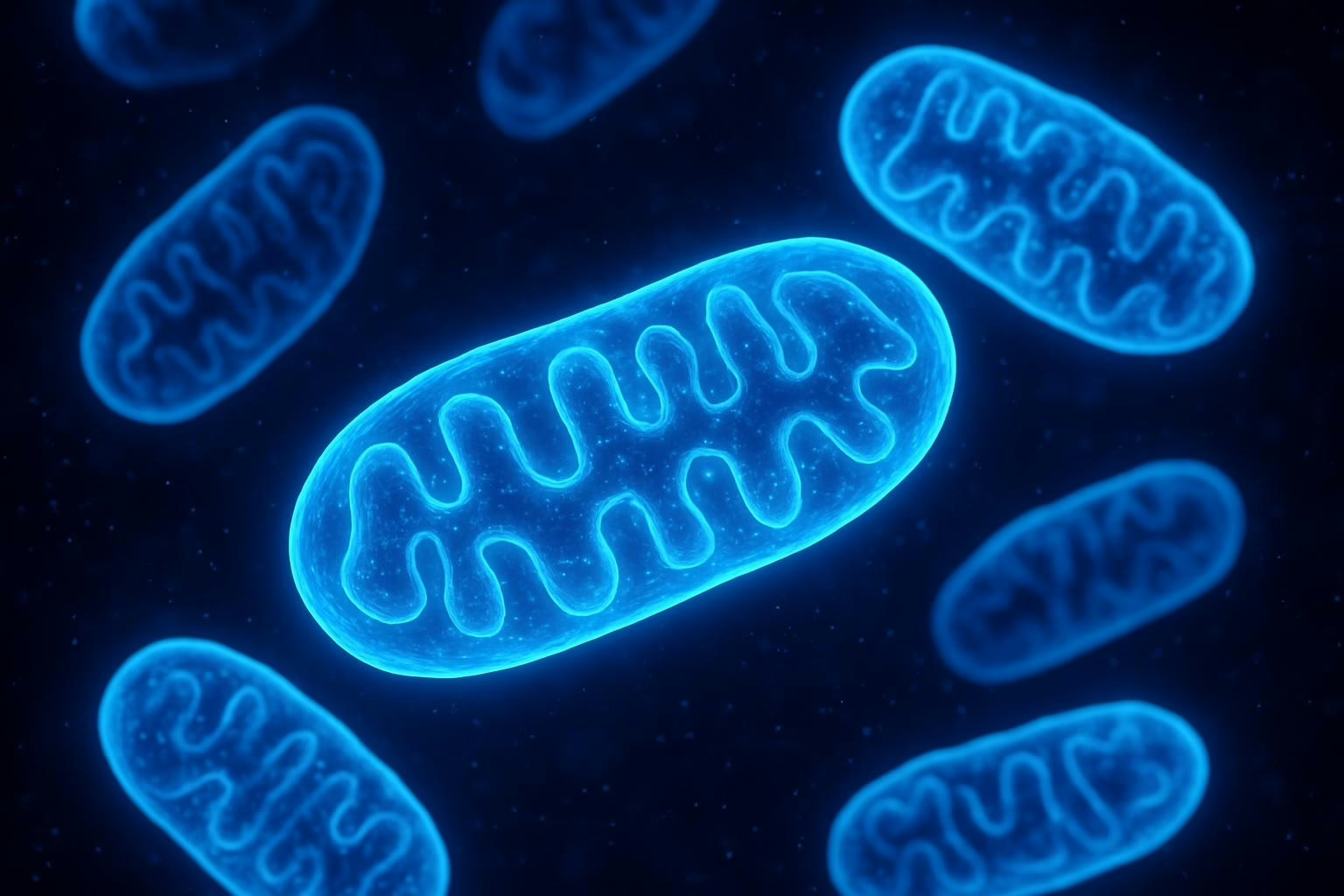
How Vitamin A Influences Our Mitochondria
Vitamin A is a really important fat soluble vitamin with possible influences on various aspects our health including our energy producing mitochondria.
Vitamin A has a strong antioxidant capacity and is known for being essential in the development of the eyes. We require vitamin on a day to day basis for the maintenance of our eyesight. Because of a strong antioxidant capacity vitamin A could support our energy producing mitochondria which has possible impacts on our overall wellbeing.
Our mitochondria are very important for sustaining all of our daily functions because they produce energy for us to use from molecules such as sugars. The mitochondria are prone to oxidative stresses and inflammation which limit their ability to sustain energy production. Antioxidants such as vitamin A are therefore increasingly being linked as being crucial for healthy mitochondrial energy production.
Here the possibly ways in which vitamin A influences mitochondrial health and energy production within the body will be considered.

Vitamin A
Vitamin A is used by the body in different forms. Current nutritional research considers vitamin A as a group of different bioavailable forms rather than just one active compound. This is very unique and separates vitamin A from other vitamins. This is because the body is very responsive in using and converting different vitamin A forms such as retinol or retinal for use in vitamin A required functions within the body.
There are also vitamin A preforms or provitamin A forms such as beta carotene that have very similar activities. Currently the suggested vitamin A RDA includes retinol activity equivalents such as beta carotene. Some studies suggest eating a mixed diet of both provitamin A and retinol.
Vitamin A is considered to be a really strong fat soluble antioxidant with a high activity in areas of the body such as the skin. Antioxidants cleanse the body of oxidative stresses which are able to cause harmful levels of inflammation or diseases such as cancer. Excess oxidative stress is also heavily linked to blood vessel issues such as atherosclerosis. Current research shows that essential antioxidants such as vitamin A may influence risks of atherosclerosis and reduce risk of strokes.
The main use of vitamin A is within the eyes. Sufficient levels of vitamin A are needed to maintain optimal eyesight and are essential for the development of the eyes. Many smokers are deficient in vitamin A and some people develop cataracts or blindness as a result of smoking.
In Which Foods Do You Find Vitamin A
There are various food sources rich in vitamin A available for us to maintain our levels of vitamin A. This includes food condiments made from liver and some fish such as tuna.
Chicken liver contains up to 366% of our RDA of vitamin A per 100 grams including retinoic acid equivalents. Chicken liver is also a nutrient dense source of many other nutrients too such as natural vitamin B12, copper, iron, selenium and some vitamin C too. Products such as chicken liver pate or parfait also contain fats which will aid the absorption of fat soluble nutrients such as vitamin A.
Scrambled eggs are also a decent source of vitamin A forms and preforms. They provide up to about 18% of your RDA of vitamin A including retinoic acid equivalents per 100 grams.
Supplemental vitamin A is also readily available in vitamin A forms such as retinol and also beta carotene.

How Vitamin A Could Support Our Energy Producing Mitochondria
While most research focuses on vitamin A and equivalents such as beta carotene in relation to the eyes or skin there is a lot of new research linking vitamin A to our mitochondria. Our mitochondria are deeply ancestral to our evolution. Science has shown they were once an independent lifeform which we brought into our cells millennia ago.
Our mitochondria provide us with energy to use in our daily functions. That includes everything from doing the housework to just simply walking a couple of steps. This energy comes in the form of ATP which is made from molecules of sugar and fats which we eat. This energy producing process occurs in the mitochondrial membranes which the fat soluble vitamin A is able to reach. That is because our cell membranes are made of small amounts of fatty acids.
Mitochondria produce a lot of oxidative molecules during energy production. This sometimes causes oxidative stress build ups and may influence levels of inflammation. That can then be detrimental for the body. Antioxidants like vitamin A may support our mitochondria in preventing internalised build ups in oxidative stress.
Research supports this and shows that vitamin A as retinol is able to reduce the amount of fat peroxidation which happens in the brain mitochondria. This has a lowering effect on oxidative stress levels and systemic inflammation which in turn prevents mitochondrial dysfunction. Vitamin A would therefore be supportive of healthy energy production and mitochondrial lifespan.
Other studies support this showing how vitamin A deficiency or depletion results in mitochondrial dysfunctions and energy deprivation. High levels of oxidative stress from vitamin A depletion may also cause cell death and reduced mitochondrial numbers. This reduces the total energy producing capacity of organs in the body.

Vitamin A May Directly Influence Mitochondrial Energy Output
One study found that retinol vitamin A is essential for the metabolic or energy producing ability of our mitochondria. If our cells are deprived or deficient in retinol then levels of respiration and the production of ATP drops within our mitochondria. Once levels of retinol are improved then the levels of energy production within our mitochondria are restored.
Retinol was found to boost energy production output within the mitochondria. Vitamin A is thought to have an effect on cell signalling within the mitochondria to improve energy molecule use for making energy.
Other studies have shown that vitamin A deprivation within cells may actually cause rapid programmed cell death because of energy production dysfunctions within our mitochondria. Research shows that vitamin A deficiency causes cytochrome C release in the mitochondria which marks the beginning of a downward spiral in the activity of mitochondria towards induced cell death. Cytochrome C is really important for maintaining healthy energy production in the membranes of our mitochondria. This again emphasises a possible importance of vitamin A for optimal energy production and mitochondrial health. Studies have also found that a higher vitamin A intake may influence energy production through improving amounts of mitochondrial membrane proteins needed for ATP production. This could be because of mitochondrial genetic activation which may also influence mitochondrial numbers.
Overall the research therefore shows that vitamin A may not just be an antioxidant that supports mitochondrial energy production but could also directly influence the rate of energy production via mitochondrial signals.

Summary
Vitamin A is a fat soluble vitamin which could influence on various aspects our health including our energy producing mitochondria.
The group of vitamin A active compounds are most well known for their influences on eye and skin health. We need vitamin A to maintain optimal eyesight. Foods such as chicken liver contain a nutrient dense serving of vitamin A per 100 grams and could support healthy vitamin A levels.
Our mitochondria help our bodies to produce energy in the form of ATP from sugars and fats. Mitochondria are vital to sustaining all of our everyday functions. The mitochondria are prone to producing oxidative molecules which effect their output of energy for us to use.
Vitamin A has a strong antioxidant effect and so is increasingly linked to being able to support healthy energy production within the body. Oxidative stress causes reductions in mitochondrial energy production and functioning. High levels of inflammation or oxidative stress may also result in programmed cell death. This also reduces the total capacity of organs to produce energy from their mitochondria.
Studies have shown that vitamin A could have a role as a mitochondrial signalling mediator to improve rate of energy production. This is in addition to having an important role as an antioxidant which supports healthy levels of mitochondrial energy production. One study has shown that vitamin A depletion or deficiency causes a massive drop in mitochondrial energy production.
Overall research is starting to show that vitamin A has an extensive role within our bodies and could be especially important for optimal mitochondrial energy production.
For more interesting articles see the main articles page.





